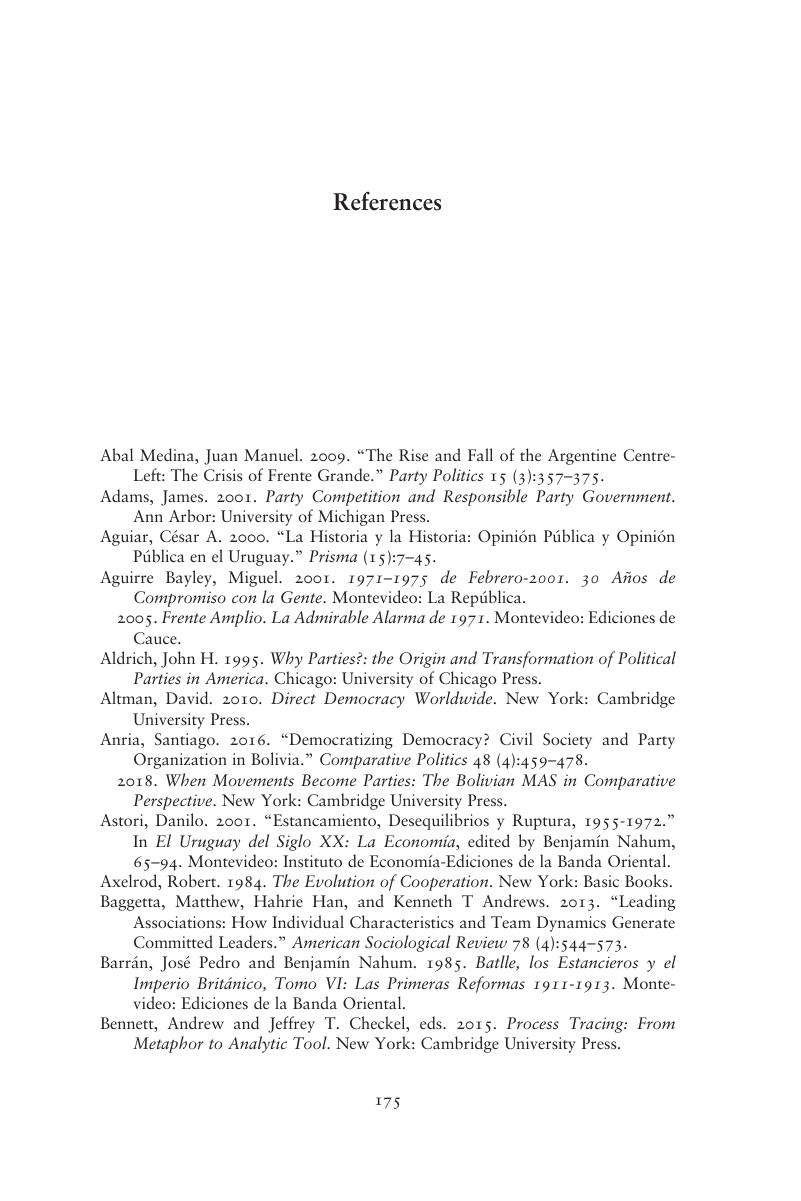Book contents
- How Party Activism Survives
- How Party Activism Survives
- Copyright page
- Dedication
- Contents
- Figures
- Tables
- Boxes
- Acknowledgments
- Abbreviations
- 1 Introduction
- 2 Context Matters
- 3 Voluntary Activism in the FA
- 4 Origins and Reproduction of the Mass-Organic Structure
- 5 Party Structure, Efficacy, and Activism
- 6 The Limits to Strategic Adaptation
- 7 The FA in Comparative Perspective
- 8 Theoretical Conclusions and Political Implications
- Appendix – Interviewees
- References
- Index
- References
References
Published online by Cambridge University Press: 28 October 2019
- How Party Activism Survives
- How Party Activism Survives
- Copyright page
- Dedication
- Contents
- Figures
- Tables
- Boxes
- Acknowledgments
- Abbreviations
- 1 Introduction
- 2 Context Matters
- 3 Voluntary Activism in the FA
- 4 Origins and Reproduction of the Mass-Organic Structure
- 5 Party Structure, Efficacy, and Activism
- 6 The Limits to Strategic Adaptation
- 7 The FA in Comparative Perspective
- 8 Theoretical Conclusions and Political Implications
- Appendix – Interviewees
- References
- Index
- References
Summary

- Type
- Chapter
- Information
- How Party Activism SurvivesUruguay's Frente Amplio, pp. 175 - 188Publisher: Cambridge University PressPrint publication year: 2019



